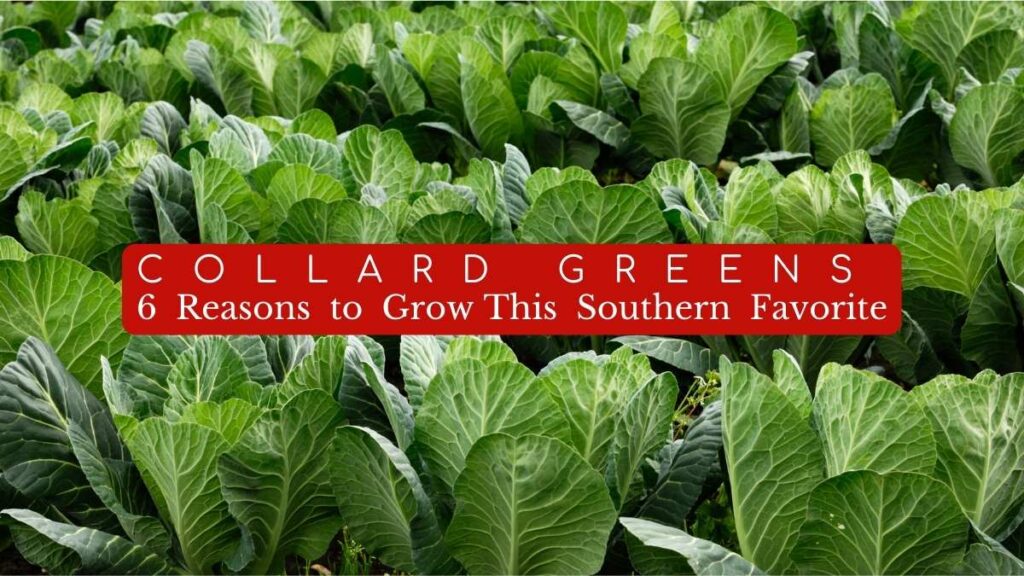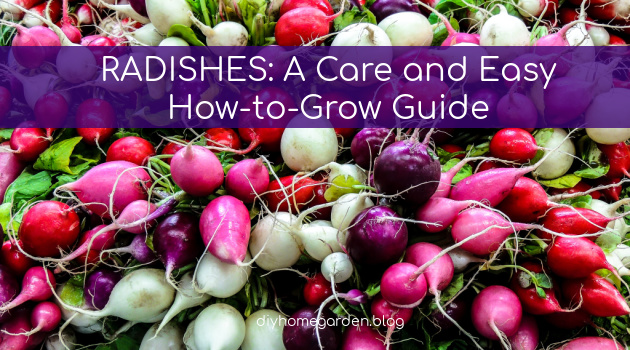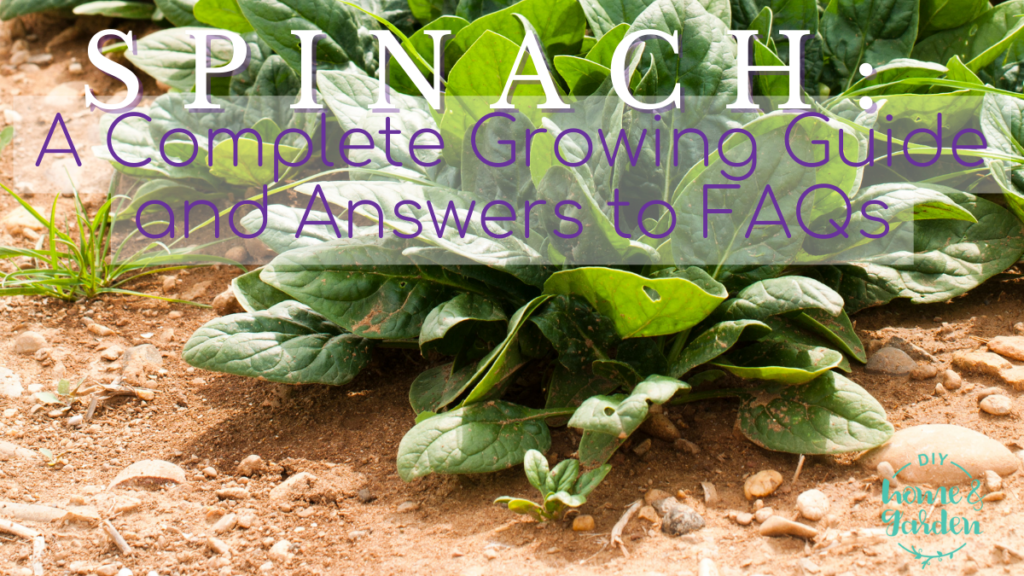Gardening is like orchestrating a symphony; every element must work harmoniously to create a beautiful outcome. As a lawn care and landscaping expert, I know that sometimes the soil in our gardens can be as temperamental as a diva. But fear not, my fellow green-thumbed enthusiasts! Today, I’ll introduce you to the top 20 vegetables that not only tolerate but thrive in acidic soil. With this knowledge, you can transform your garden’s challenges into opportunities, ensuring a bountiful and delicious harvest.
NOTE: Tomatoes are acid-loving vegetables. However, I deliberately omitted them from this list. Why? Because everyone seems to know that tomatoes love acidic soil. Thus, I wanted to bring you fresh, new ideas instead of telling you to grow tomatoes. (In fact, “what to plant in acidic soil besides tomatoes” and “what to plant in acidic soil besides blueberries,” pre-fills on Google. That means gardeners thirst for this information.
Acidic Soil and Vegetable Gardening
Soil pH is a measure of the acidity or alkalinity of the soil, and it plays a crucial role in determining the health and productivity of your plants. The pH scale ranges from 0 to 14, with 7 being neutral. Acidic soils have a pH lower than 7, while alkaline soils have a pH higher than 7. Most vegetables prefer a pH between 6.0 and 7.0. But some flourish in acidic conditions. Understanding which plants are suited for your soil’s pH can help you maximize your garden’s potential.
Benefits of growing vegetables in acidic soil
While acidic soil can challenge some plants, it can also provide unique benefits. Acid-loving vegetables often experience fewer pests and diseases, and their flavors can be enhanced by the soil’s acidity. Moreover, embracing your garden’s natural acidity can save time and effort on amending the soil, allowing you to focus on nurturing your plants instead.
How to test and amend your soil’s acidity
Before planting, it’s essential to test your soil’s pH to ensure the right conditions for your chosen vegetables. You can use a pH testing kit or seek assistance from your local extension office. If you need to adjust the acidity, you can use organic amendments such as sulfur or pine needles. However, for the vegetables in this list, your acidic soil is just what they need to flourish.
Companion Planting in Acidic Soil
Not only do you need to know what plants will thrive in acidic growing conditions, you should research what will flourish alongside them.
Understanding companion planting benefits
Companion planting involves growing certain plants close together to improve their growth, health, and productivity. This method can help control pests, improve soil quality, and even enhance the flavor of your vegetables.
Best companion plants for acidic soil vegetables
Consider incorporating companion plants that thrive in similar conditions when growing vegetables in acidic soil. For example, blueberries, azaleas, and rhododendrons are well-suited for acidic soil and can provide natural pollination opportunities, soil improvement, and aesthetic appeal to your garden.
Maintaining Your Acidic Soil Vegetable Garden
Your work doesn’t end after you plant your garden. Here are some ongoing tasks to consider.
Regular soil testing and amendments
Although the vegetables on this list prefer acidic soil, monitoring your soil’s pH is incredibly important. Test your soil at least once a year and make any necessary amendments to maintain the optimal pH range for your plants.
Organic fertilizers and soil amendments for acidic soil
When fertilizing your acidic soil vegetable garden, opt for organic options like compost, aged manure, or worm castings. These amendments can provide essential nutrients and help maintain soil structure and pH levels.
Watering and mulching tips for optimal growth
Consistent watering is essential for growing healthy vegetables in acidic soil. Use a drip irrigation system or soaker hose to ensure even, deep watering. Apply a layer of organic mulch, like straw or shredded leaves, to help retain moisture and regulate soil temperature.
Harvesting and Enjoying Your Acidic Soil Vegetables
What to do with that harvest?
Knowing when to harvest each vegetable
Each vegetable has its unique harvest time, depending on its growth rate and ideal maturity. Look at your plants and refer to seed packets or gardening guides for specific harvest times. Generally, harvesting vegetables when they’re young and tender for the best flavor and texture is best.
Storing and preserving your acidic soil vegetables
Proper storage and preservation methods can help you enjoy your homegrown vegetables long after the growing season has ended. Store root vegetables like potatoes and radishes in a cool, dark place with good air circulation. Leafy greens can be stored in the refrigerator, wrapped in a damp paper towel. For long-term preservation, consider canning, freezing, or dehydrating your harvest.
Delicious recipes to make the most of your harvest
Experiment with different recipes and cooking techniques to showcase your acidic soil vegetables’ unique flavors and textures. Try roasting root vegetables for a caramelized, earthy flavor, or sauté leafy greens with garlic and a splash of lemon juice for a quick and nutritious side dish. The possibilities are endless!
The Top 20 Vegetables for Acidic Soil
Understanding and working with your garden’s unique conditions allows you to cultivate a flourishing and diverse vegetable garden in acidic soil. As you enjoy the fruits of your labor, you’ll find that overcoming the challenges of acidic soil is rewarding and can lead to a deeper connection with your garden. So, take up your conductor’s baton and start orchestrating your garden symphony; these 20 vegetables are ready to take center stage.
1. Potatoes: The versatile root vegetable
Preferred soil acidity
Potatoes (Solanum tuberosum) thrive in a pH range of 4.5 to 6.0, making them well-suited for acidic soils.
Planting and care tips
Plant seed potatoes in early spring once the soil has warmed up and is workable. Space them 12 inches apart, in rows 30 inches apart, and cover them with 3 to 4 inches of soil. As the plants grow, hill soil around the stems to protect the developing tubers from sunlight. Water consistently, ensuring the soil remains moist but not waterlogged.
2. Radishes: The crunchy, colorful addition to your garden
Preferred soil acidity
Radishes (Raphanus sativus) enjoy a pH range of 4.5 to 6.0, allowing them to grow well in acidic soil.
Planting and care tips
Sow radish seeds directly in the garden, 4 to 6 weeks before the last expected frost. Space seeds 1 inch apart, in rows 12 inches apart, and cover with 1/2 inch of soil. Thin seedlings to 2 inches apart as they grow. Radishes require consistent moisture and grow quickly, so check the soil frequently and water as needed.
3. Sweet Potatoes: A nutritious and delicious choice
Preferred soil acidity
Sweet Potatoes (Ipomoea batatas) grow well in a pH range of 5.0 to 6.0, making them suitable for acidic soil.
Planting and care tips
Plant sweet potato slips in well-draining soil after the last frost, when the soil has warmed up. Space the slips 12 to 18 inches apart in rows 3 feet apart. Sweet potatoes require consistent moisture and a long, warm growing season. Mulch around the plants to help retain moisture and suppress weeds.
4. Garlic: The aromatic and flavorful allium
Preferred soil acidity
Garlic (Allium sativum) thrives in a pH range of 5.5 to 6.5, adapting well to acidic soils.
Planting and care tips
Plant garlic cloves in well-draining soil in the fall, about 4 to 6 weeks before the ground freezes. Space the cloves 4 to 6 inches apart, in rows 12 to 18 inches apart, with the pointed end facing up. Cover with 2 inches of soil and add a layer of mulch to help insulate the cloves during winter. Garlic requires full sun and consistent moisture throughout the growing season.
5. Onions: The versatile and essential kitchen ingredient
Preferred soil acidity
Onions (Allium cepa) prefer a pH range of 5.5 to 6.5, making them compatible with acidic soils.
Planting and care tips
Start onion seeds indoors 8 to 10 weeks before the last frost, or plant onion sets directly in the garden as soon as the soil is workable. Space the sets 4 to 6 inches apart, in rows 12 to 18 inches apart. Onions require full sun and well-draining soil. Keep the soil consistently moist and weed-free throughout the growing season.
6. Shallots: The mild and sweet allium
Preferred soil acidity
Shallots (Allium cepa var. aggregatum) grow well in a pH range of 5.5 to 6.5, adapting to acidic soil conditions.
Planting and care tips
Plant shallot sets in well-draining soil in early spring, as soon as the ground can be worked. Space the sets 4 to 6 inches apart, in rows 12 to 18 inches apart. Shallots need full sun and consistent moisture throughout the growing season. Keep the soil weed-free and apply a layer of mulch to help retain moisture.
7. Leeks: The subtly flavored allium
Preferred soil acidity
Leeks (Allium ampeloprasum) grow best in a pH range of 5.5 to 6.5, making them suitable for acidic soils.
Planting and care tips
Sow leek seeds indoors 8 to 10 weeks before the last frost, or plant leek seedlings
directly in the garden in early spring. Space the seedlings 6 inches apart, in rows 12 to 18 inches apart. Leeks require full sun and well-draining soil. Keep the soil consistently moist and weed-free throughout the growing season. As the leeks grow, mound soil around the base of the plants to blanch the stems and create a longer, tender white portion.
8. Broccoli: The nutrient-packed cruciferous vegetable
Preferred soil acidity
Broccoli (Brassica oleracea var. italica) prefers a pH range of 5.5 to 6.5, allowing it to grow in acidic soil.
Planting and care tips
Start broccoli seeds indoors 6 to 8 weeks before the last frost, or plant seedlings directly in the garden 2 to 3 weeks before the last frost. Space the seedlings 18 inches apart, in rows 24 to 36 inches apart. Broccoli needs full sun and well-draining soil. Maintain consistent moisture, especially during head formation, and apply a layer of mulch to help retain moisture and suppress weeds.
9. Cauliflower: The versatile and mild-flavored cruciferous vegetable
Preferred soil acidity
Cauliflower (Brassica oleracea var. botrytis) grows well in a pH range of 5.5 to 6.5, making it suitable for acidic soils.
Planting and care tips
Start cauliflower seeds indoors 6 to 8 weeks before the last frost, or plant seedlings directly in the garden 2 to 3 weeks before the last frost. Space the seedlings 18 to 24 inches apart, in rows 24 to 36 inches apart. Cauliflower requires full sun, well-draining soil, and consistent moisture. When the head begins to form, fold the outer leaves over the head to protect it from sunlight and maintain its white color.
10. Brussels Sprouts: The miniature cabbage with a big flavor
Preferred soil acidity
Brussels sprouts (Brassica oleracea var. gemmifera) prefer a pH range of 5.5 to 6.5, allowing them to grow in acidic soil.
Planting and care tips
Start Brussels sprout seeds indoors 6 to 8 weeks before the last frost, or plant seedlings directly in the garden 2 to 3 weeks before the last frost. Space the seedlings 18 to 24 inches apart, in rows 24 to 36 inches apart. Brussels sprouts require full sun and well-draining soil. Keep the soil consistently moist and apply a layer of mulch to help retain moisture and suppress weeds. Remove the lower leaves as the sprouts develop to encourage growth.
11. Spinach: The versatile and nutrient-rich leafy green
Preferred soil acidity
Spinach (Spinacia oleracea) thrives in a pH range of 5.5 to 6.5, making it well-suited for acidic soils.
Planting and care tips
Sow spinach seeds directly in the garden 4 to 6 weeks before the last frost, or plant seedlings 2 to 3 weeks before the last frost. Space the seeds or seedlings 3 inches apart, in rows 12 to 18 inches apart. Spinach grows best in full sun to partial shade and well-draining soil. Keep the soil consistently moist and weed-free throughout the growing season. Harvest spinach leaves as needed, starting with the outer leaves, to encourage continued growth.
12. Swiss Chard: The colorful and nutritious leafy green
Preferred soil acidity
Swiss chard (Beta vulgaris subsp. vulgaris) grows well in a pH range of 5.5 to 6.5, making it suitable for acidic soils.
Planting and care tips
Sow Swiss chard seeds directly in the garden 2 to 3 weeks before the last frost, or plant seedlings simultaneously. Space the seeds or seedlings 6 inches apart, in rows 12 to 18 inches apart. Swiss chard prefers full sun to partial shade and well-draining soil. Keep the soil consistently moist and weed-free throughout the growing season. Harvest Swiss chard leaves as needed, starting with the outer leaves, to encourage continued growth.
13. Parsley: The flavorful and versatile herb
Preferred soil acidity
Parsley (Petroselinum crispum) prefers a pH range of 5.5 to 6.5, making it compatible with acidic soils.
Planting and care tips
Start parsley seeds indoors 6 to 8 weeks before the last frost, or sow seeds directly in the garden when the soil is workable. Space the seeds or seedlings 8 to 10 inches apart, in rows 12 inches apart. Parsley grows best in full sun to partial shade and well-draining soil. Keep the soil consistently moist and weed-free throughout the growing season. Harvest parsley leaves as needed, starting with the outer leaves, to encourage continued growth.
14. Peppers: The spicy or sweet addition to your garden
Preferred soil acidity
Peppers (Capsicum annuum) grow well in a pH range of 5.5 to 6.5, adapting to acidic soil conditions.
Planting and care tips
Start pepper seeds indoors 8 to 10 weeks before the last frost, or plant seedlings directly in the garden 2 to 3 weeks after the last frost. Space the seedlings 18 to 24 inches apart, in rows 24 to 36 inches apart. Peppers require full sun and well-draining soil. Keep the soil consistently moist and weed-free throughout the growing season. Support pepper plants with stakes or cages to prevent them from toppling over under the weight of the fruit.
15. Cabbage: The versatile and hearty cruciferous vegetable
Preferred soil acidity
Cabbage (Brassica oleracea var. capitata) prefers a pH range of 5.5 to 6.5, allowing it to grow in acidic soil.
Planting and care tips
Start cabbage seeds indoors 6 to 8 weeks before the last frost, or plant seedlings directly in he garden 2 to 3 weeks before the last frost. Space the seedlings 12 to 24 inches apart, in rows 24 to 36 inches apart. Cabbage requires full sun and well-draining soil. Keep the soil consistently moist and weed-free throughout the growing season. Apply a layer of mulch to help retain moisture and suppress weeds. Cabbage can be harvested when the heads are firm and have reached the desired size.
16. Strawberries: Juicy, sweet fruit and an excellent ground cover
Preferred soil acidity
Strawberries (Fragaria × ananassa) grow well in a pH range of 5.5 to 6.5, making them suitable for acidic soils.
Planting and care tips
Plant strawberry crowns or transplants in early spring, as soon as the soil can be worked. Space the plants 18 to 24 inches apart, in rows 3 to 4 feet apart. Strawberries prefer full sun and well-draining soil. Keep the soil consistently moist and weed-free throughout the growing season. You can harvest strawberries when the fruits are fully red, typically 4 to 6 weeks after the blossoms receive pollination.
17. Beets: The earthy and nutritious root vegetable
Preferred soil acidity
Beets (Beta vulgaris) grow well in a pH range of 5.5 to 6.5, making them suitable for acidic soils.
Planting and care tips
Sow beet seeds directly in the garden 2 to 3 weeks before the last frost, or plant seedlings simultaneously. Space the seeds or seedlings 3 to 4 inches apart, in rows 12 to 18 inches apart. Beets prefer full sun and well-draining soil. Keep the soil consistently moist and weed-free throughout the growing season. Beets can be harvested when the roots have reached the desired size, typically 7 to 8 weeks after planting.
18. Carrots: The sweet and crunchy root vegetable
Preferred soil acidity
Carrots (Daucus carota) prefer a pH range of 5.5 to 6.5, allowing them to grow in acidic soil.
Planting and care tips
Sow carrot seeds directly in the garden 2 to 3 weeks before the last frost, or plant seedlings at the same time. Space the seeds or seedlings 1 to 2 inches apart, in rows 12 to 18 inches apart. Carrots grow best in full sun and well-draining, loose soil. Keep the soil consistently moist and weed-free throughout the growing season. Carrots can be harvested when the roots have reached the desired size, typically 2 to 4 months after planting.

19. Kale: The nutrient-dense and versatile leafy green
Preferred soil acidity
Kale (Brassica oleracea var. acephala) grows well in a pH range of 5.5 to 6.5, making it suitable for acidic soils.
Planting and care tips
Start kale seeds indoors 6 to 8 weeks before the last frost, or sow seeds directly in the garden 3 to 5 weeks before the last frost. Space the seeds or seedlings 12 to 18 inches apart, in rows 18 to 24 inches apart. Kale prefers full sun to partial shade and well-draining soil. Keep the soil consistently moist and weed-free throughout the growing season. Harvest kale leaves as needed, starting with the outer leaves, to encourage continued growth.
20. Collard Greens: The hearty and nutritious Southern favorite
Preferred soil acidity
Collard greens (Brassica oleracea var. viridis) thrive in a pH range of 5.5 to 6.5, making them well-suited for acidic soils.
Planting and care tips
Start collard green seeds indoors 6 to 8 weeks before the last frost, or sow seeds directly in the garden 3 to 4 weeks before the last frost. Space the seeds or seedlings 12 to 18 inches apart, in rows 18 to 24 inches apart. Collard greens grow best in full sun and well-draining soil. Keep the soil consistently moist and weed-free throughout the growing season. Harvest collard green leaves as needed, starting with the outer leaves, to encourage continued growth.

The Takeaway: Grow the Selections from This Acid-Loving Plants List for a Thriving Garden in Acidic Soil
Cultivating a garden is much like curating an art collection; each plant plays a crucial role in the overall display. By carefully selecting vegetables suited to acidic soil, you won’t just be tending to a garden but nurturing a fertile canvas of edible art that can reward you with a bountiful harvest. It’s all about strategic choices. From the leafy greens of spinach, kale, and collard greens, to the vibrant colors of beets, peppers, and carrots, each vegetable adds unique flavor and nutrients to your garden.
However, a successful harvest isn’t an overnight success; it requires careful planning, thoughtful preparation, and consistent care. It’s a commitment, a labor of love, that gradually unfolds over the growing season. You’ll find yourself in an ongoing dance with nature, adjusting to its rhythms, responding to its challenges, and savoring its rewards.
With time, your garden will become a symphony of colors and textures, each vegetable playing its part in this nature-inspired composition. It’s a visual spectacle that can delight your senses and nourish your body. Yet, more than that, it’s a testament to your nurturing spirit, ability to coax life from the soil, and commitment to sustainably sourced, homegrown food.
To make the most out of your gardening adventures, follow DIY Home & Garden! You will find helpful tips, practical advice, and inspirational ideas. We cover various topics designed to empower you in creating the garden of your dreams. Stay updated with the latest gardening trends, learn about new plant varieties, and join a community of fellow gardening enthusiasts who share your passion for the earth’s bounty. To ensure you don’t miss out on any updates, opt-in to follow DIY Home & Garden. Together, we’ll turn your gardening aspirations into a thriving reality. Happy gardening!
- Are Geraniums Annual or Perennial? - 09/21/2024
- DIY Home & Garden: Featured on ApartmentGuide - 09/21/2024
- Bacon: Creative Uses That Go Beyond the Breakfast Table - 09/08/2024





